The Ukrainian train crew that has saved 59,000 refugees
Before the war, Galyna Neholiuk was a cashier at Pokrovsk train station in Donbas. But since the invasion, the railway has become a lifeline for Ukrainian civilians fleeing Russian bombs. And Galyna has been thrust into the role of rescue coordinator.
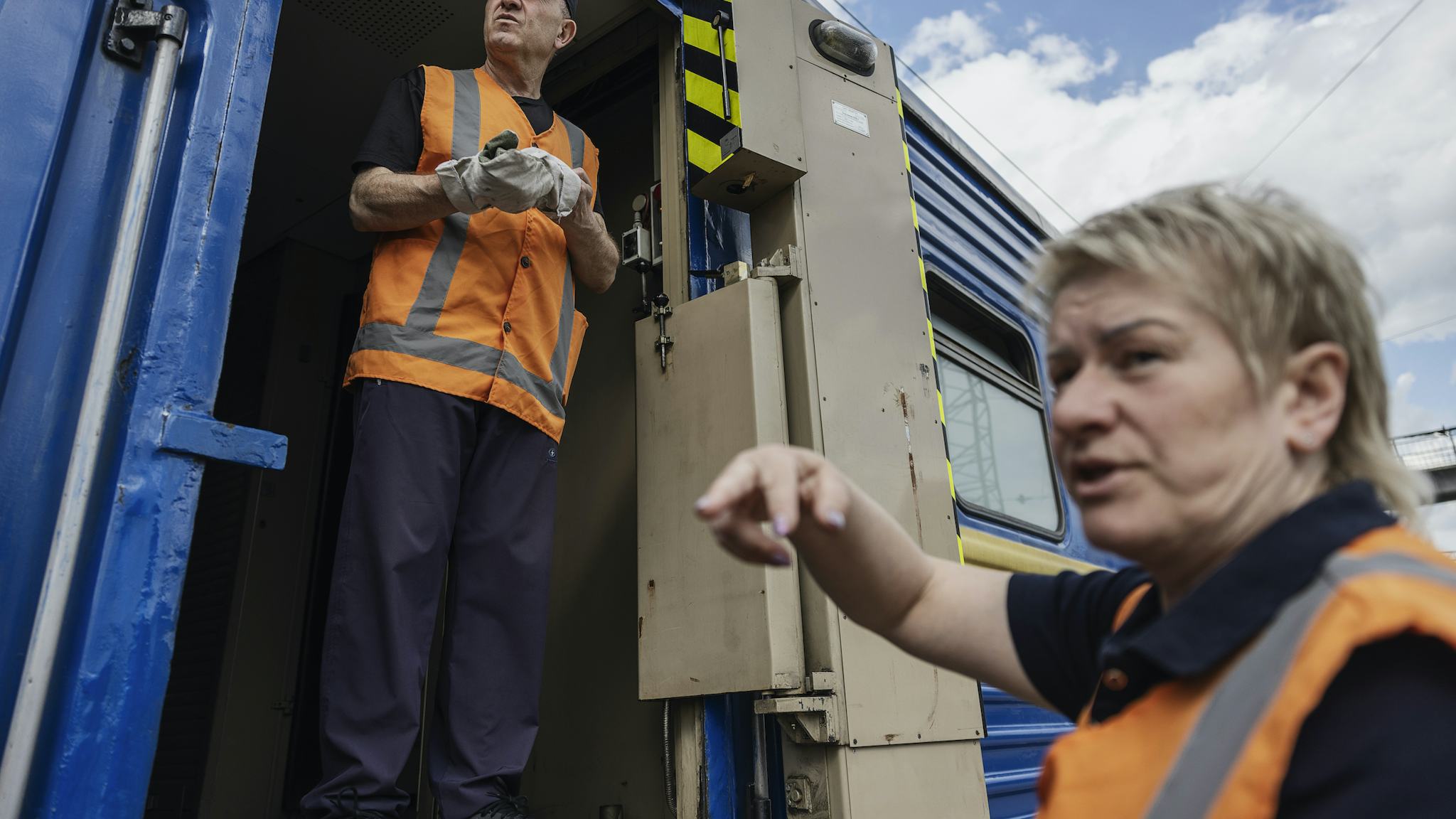
Yulia Iakovlieva and Vartan Kazinian has worked together at the Ukrainan railway operator Ukrzaliznytsia for 15 years. Since the start of the Russian invasion, they have been evacuation refugees by rail.
Galyna Neholiuk rolls her eyes slightly.
“I never expected to be in this situation. Even now, I believe that this war will end and that I will soon be able to go back my old life again,” she says.
The old life took place in Pokrovsk, an industrial town with 60,000 inhabitants, centered around Ukraine’s largest coal mine and known as the western gate of Donbas.
Galyna Neholiuk was born there, grew up there, started a family there. And in 1991, the same year that the Soviet empire collapsed and Ukraine declared independence, she took a job at her hometown’s railway station.
“My husband is also with the railway company. He drives freight trains. But we didn’t meet at work, we are old classmates.”
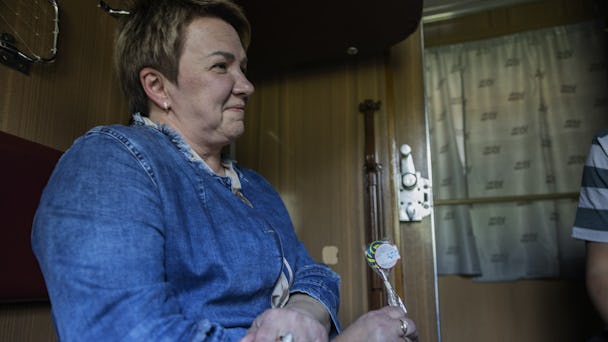
15 million refugees
Now Galyna Neholiuk is on her way home. The train that runs from Dnipro to Pokrovsk is empty of passengers but full of activity. Food and water, sleeping places, medical equipment. Everything must be prepared before arrival.
“The refugees are often tired and exhausted. Many don’t even have a destination when they leave their hometowns,” she says.
The war in Ukraine is the largest in Europe since World War II. The refugee crisis as well. Russia’s invasion has displaced about 15 million Ukrainians. Seven million people have fled the country, even more have been internally displaced.
The state-owned railway company Ukrzaliznytsia and its staff have played a crucial role in evacuating refugees. And Galyna Neholiuk has swapped the ticket office in Pokrovsk for an improvised position as rescue coordinator.
The largest number we have evacuated in one day was 6,500 people. That was from Sloviansk, it’s a big city.
No one forced it upon her. But during the first chaotic days of the war, someone needed to keep in touch with authorities and the military. Many of her colleagues had already fled.
Circumstances and a sense of responsibility made Galyna Neholiuk step up.
“I didn’t feel like I had any choice but to start working with this,” she says.
As the train approaches Donbas, she coordinates with the Pokrovsk emergency services and the independent groups evacuating residents from the war zones a few miles to the east.
“I am in direct contact with the volunteers, we need to know how many refugees we can expect,” says Galyna Neholiuk.
“The largest number we have evacuated in one day was 6,500 people. That was from Sloviansk, it’s a big city. Since I started doing this, we have evacuated almost 59,000 people.”

Alone with six grandkids
Vans are waiting on the platform in Pokrovsk. In the cargo holds, elderly people from a local hospice are tucked in, hollow-eyed and confused looking.
The hospitals in Donbas are forced to prioritise emergency care. The final stages of life has to take place elsewhere.
The refugees travel light. When war comes knocking, there is only time to pack the basic necessities.
Valentyna Filipovna is solely responsible for six grandchildren, all girls.
“The only things we were able to bring with us are clothes and some blankets,” she says.
“And the cat!” shouts Snizhanna, 4 years, and enthusiastically pulls the animal out of its temporary home in a picnic basket.
The battle for Donbass
In 2014, Ukraine’s pro-Russian President Viktor Yanukovych was overthrown in the revolutionary Euromaidan uprising. His successors have tried to inch closer to the EU and NATO.
In connection with the Euromaidan uprising, the Donetsk and Luhansk regions of eastern Ukraine declared independence.
Donetsk and Luhansk together form the Donbas region. The region is dominated by Russian-speaking Ukrainians and the separatists are considered to have had military support from Russia. On February 21, 2022, Russia recognised the independence of the regions.
After Russia was forced to withdraw from Kyiv, the fiercest fighting is now raging in Donbas. After a protracted siege and ruthless shelling, Russia has, among other things, taken the strategic port city of Mariupol.
The ongoing battle for Sevierodonetsk is described as one of the most brutal in the war. Ukrainian President Volodymyr Zelensky has warned that the entire Donbas could fall with the city.
The war seems to have united Ukrainians, including Russian speakers. Before the invasion, 34 percent had a positive image of Russia. Now that share has dropped to 2 percent.
Their hometown Avdiivka is located 60 km away, just outside Donetsk, and has been the site of fierce battles. But for Avdiivka, the war did not start on February 24 this year, but in April of 2014 when Russian-backed separatists took the city.
Ukraine regained control. Avdiivka became the front line, heavily militarised and subject to recurring clashes, against the self-proclaimed Donetsk People’s Republic. The youngest of Valentyna Filipovnas’s grandchildren have never experienced peace.
“When the bombs fell, I told them that the Russians were aiming at the factory, not at our house,” she says.
The white lie lasted for a while. But the family’s house was eventually hit. Since May 17, they have been on the run.
When the bombs fell, I told them that the Russians were aiming at the factory, not at our house.
They are leaving a poor part of a poor country. Their few belongings are crammed into backpacks, cardboard bags, buckets. In a transparent plastic bag, Valentyna Filipovna has collected worn-out identity documents.
She looks relieved when her grandchildren board the train. But two of the girls, she says worriedly, have almost stopped talking since the explosions shook Avdiivka.
While she recounts their journey, her granddaughter Sofie, 13, scrolls on her mobile phone. Half of the feed is celebrity news, the other half is brutal war images.
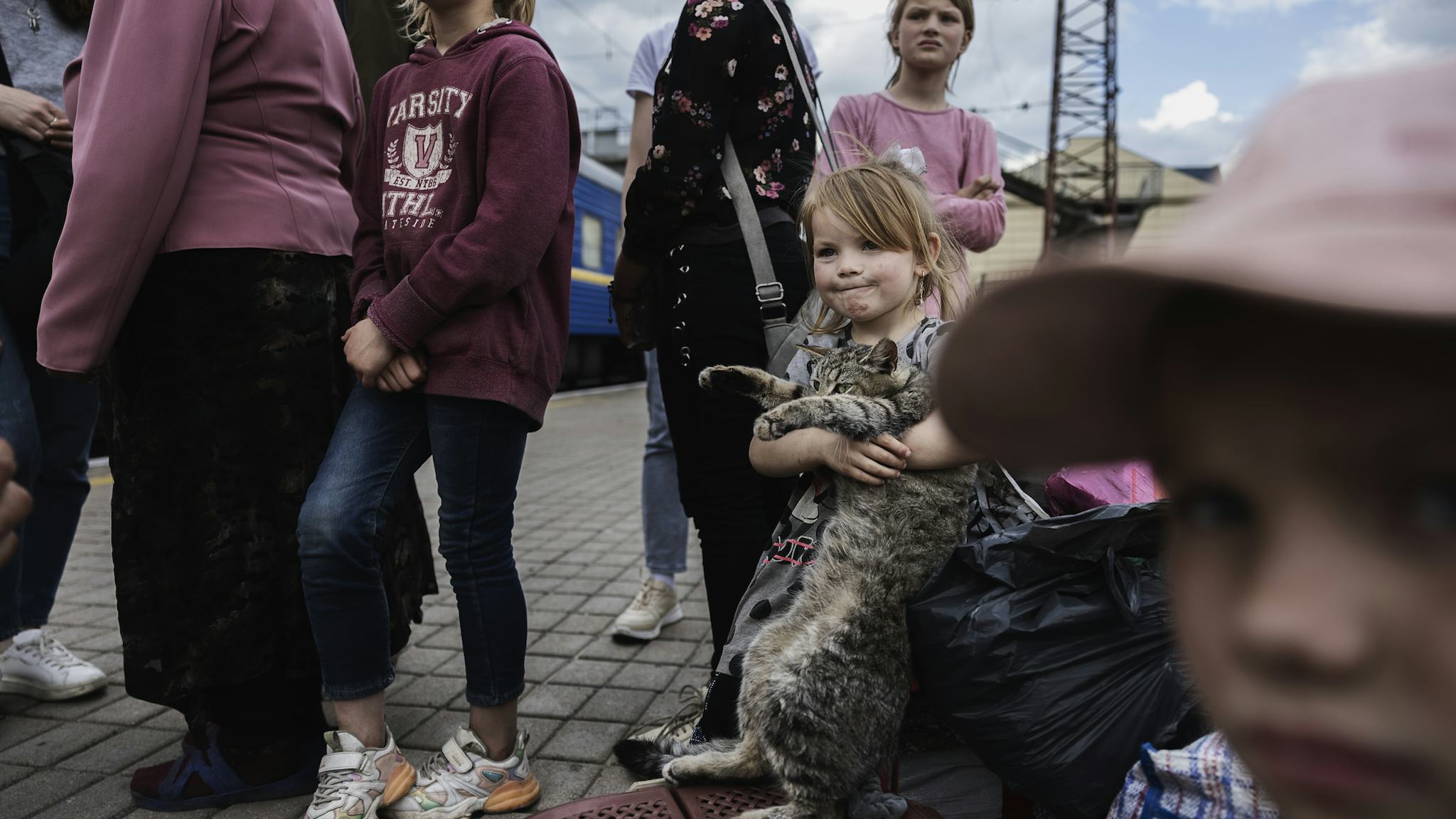
200,000 employees at Ukrzaliznytsia
The evacuations are a well oiled operation. As soon as the train leaves Pokrovsk, the staff begins to write down the refugees’ information. Where do they come from? What needs do they have? Is anyone sick or injured? Do they have relatives to turn to?
Since the war began, about four million people, a tenth of the Ukraine’s population, have been evacuated from war zones by rail. The routines are in place, says train host Vartan Kazinian. At the end of February, the situation was different.
“When the war started, I did not sleep for seven days. It’s true! We did not wash either because there was no water.”
The railway is part of the Ukrainian civil defense. The structure is a legacy from the Soviet Union and compared to most countries, staff density is sky high. Ukrzaliznytsia has over 200,000 employees. Ineffective in peacetime? Perhaps. But a lifeline in crisis.
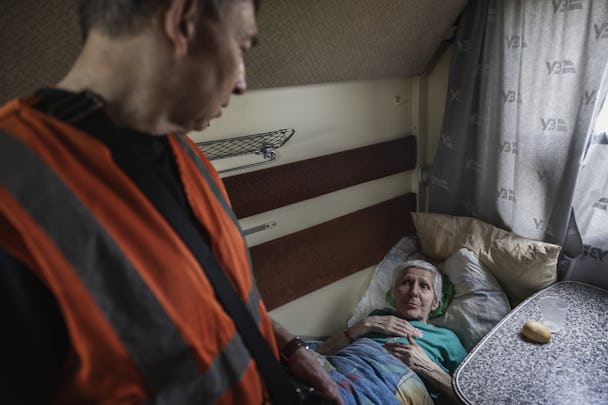
Worked for 17 days without break
From the outbreak of the war, Vartan Kazinian worked 17 days in a row. He remembers the chaos. Platforms so filled with desperate refugees that he couldn’t disembark. 2,000 people stuffed in a train with room for 600. How he tried to avoid stepping on the bodies that filled the floors of the carriages.
“We’ve been forced to leave people on the platform when we didn’t have room on the train. Many times,” he says.
Train attendant Vartan Kazinian has been with the railway for 23 years. For 15 of them he has worked in tandem with colleague Yulia Iakovlieva. Together, they maintain a carriage adapted for the disabled and transportation of medical patients.
“We have a very strong friendship,” she says.
The war is still brutally devastating. But it is no longer new. Battle lines have been drawn and Russia is now focused on capturing Donbas. The railway staff are away from their families for long periods and sleep on board the trains. But it is finally possible to have something at least resembling a work schedule.
“Now I have worked every day for two weeks, but next week I will have time off,” says Yulia Iakovlieva.
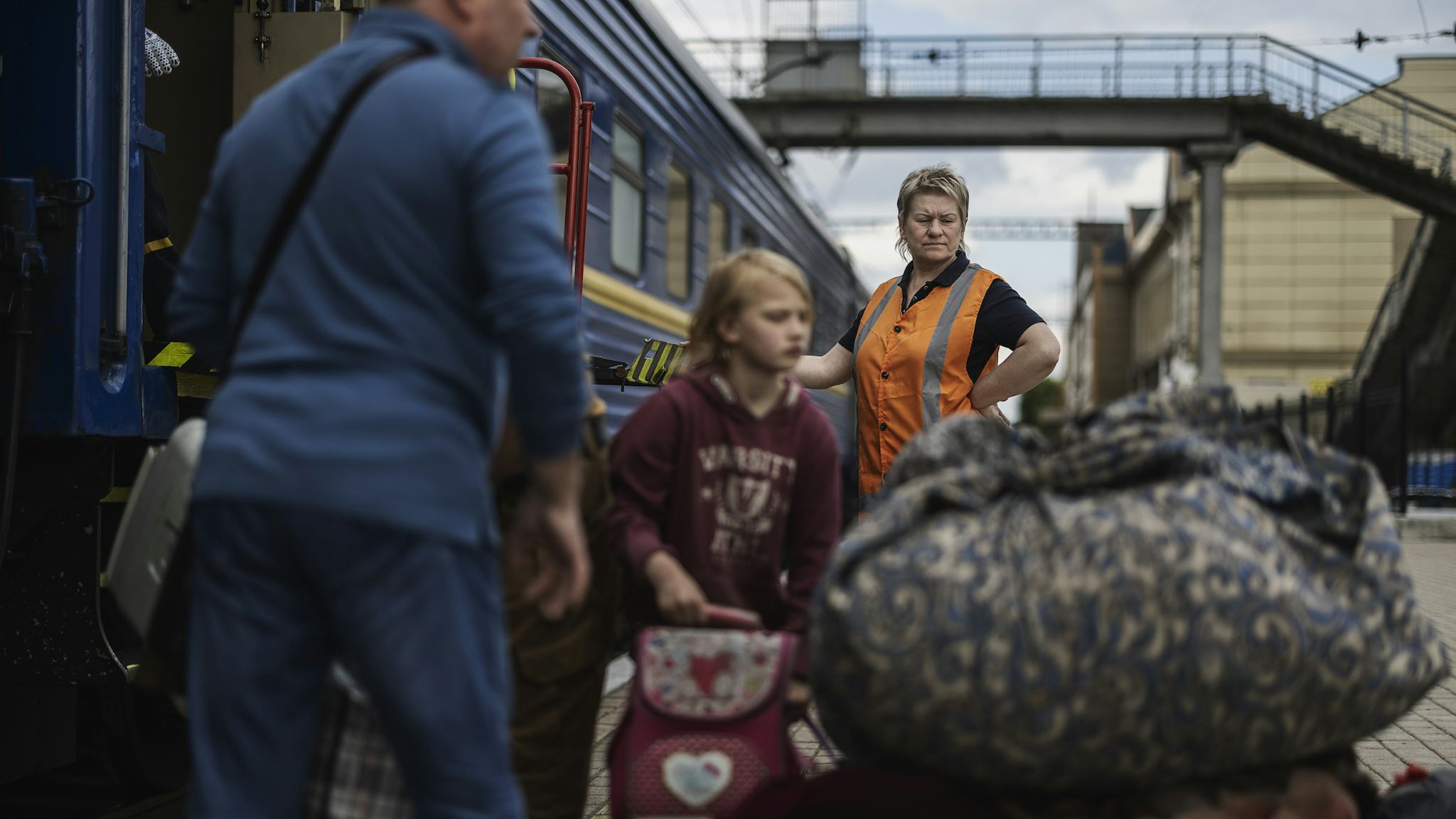
Russian terror against civilians
The war is also, still, dangerous. A few days before the evacuation, Russian rockets hit Pokrovsk.
Artillery fire has been directed at the evacuation trains and at least one train attendant has died after being hit by shrapnel.
One event stands out. On April 8, a Russian missile struck the Kramatorsk railway station, where thousands of refugees were waiting. The attack served no obvious military purpose. The nearly 60 victims were apparently killed in an act of state terrorism.
Everyone is aware of the event. Nobody talks about it more than necessary.
“Without us, there would be no evacuations, that is a fact. So we have to do our job. But we try to choose safe routes,” says Vartan Kazinian.
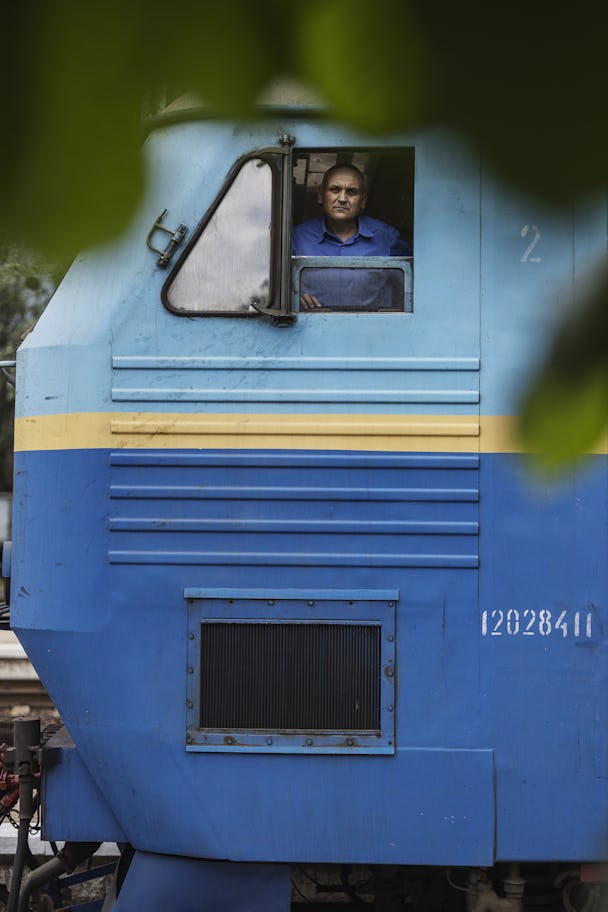
“Like a family now”
On this day, the evacuation takes place without incident. When the train rolls towards the relative safety in western Ukraine, there are 223 refugees on board.
“It is mothers with children, elderly, some people from occupied towns and villages who have not been able to evacuate until now,” says Galyna Neholiuk.
The ticket cashier turned rescue coordinator talks about how her colleagues on the railway support each other, about a sense of community that gives strength, about not having time to be afraid.
“When the war ends, the first thing I will do is gather my entire team, everyone from the rescue service, the volunteers, and go down to the river and talk about what we did together,” she says.
“All these people I didn’t know before, they are like a family now.”
The war in Ukraine
At the end of 2021, Russia mobilised at least 100,000 troops to the Ukrainian border. Early in the morning of February 24, 2022, the Russian military launched a large-scale invasion of Ukraine.
But Russia’s aggression against Ukraine has lasted longer than that. Since 2014, Russia is believed to have supported separatists in eastern Ukraine, where the low-intensity conflict has cost 15,000 lives over the years.
In the spring of 2014, Russia also annexed the Crimean peninsula, in violation of international law.
According to the UN, at least 4,597 civilian Ukrainians have lost their lives since February 24. The actual figures are likely to be significantly higher. Russia has razed entire cities to the ground and in many places intense fighting means that it is impossible to count the victims.








